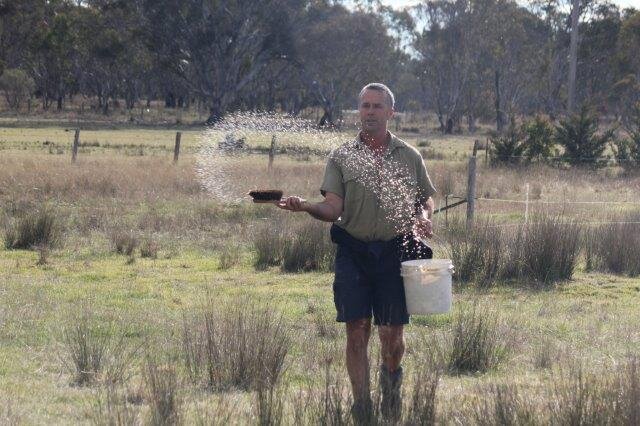6 keys to successfully using biological stimulants
I frequently hear stories of bio-stimulants being applied with a conventional fertiliser mentality, with trials done in strips to see if there is a visible difference after applying them. Before you write off the bio-stimulant application as not working when a visible fertiliser type response is not obvious, remind yourself to focus on the purpose of the product you are applying.
Decisions…decisions…
The rain has finally come! And the grass (and most likely weeds aplenty) start to grow. The air is suddenly full of hope that the struggles of the past months, or perhaps years of either no, or minimal rainfall are going to become nothing more than a bad memory.
But are the struggles really over? Or perhaps just beginning?
Regenerate for the next generation
Declining soil and ecosystem health are at the core of the reason so many farming families are leaving the land. The ease of blaming the declining profitability of farming on external factors over which we have no control such as droughts, markets, rising costs of inputs, governments etc has made this easy to disguise. By continually addressing the symptoms rather than the cause of these issues, the impact of unintended consequences of agricultural practices have continued to compound. Declining soil carbon reserves, soil compaction, algal blooms in water bodies, biodiversity decline, broken water cycles, high suicide rates in farmers and declining farm profits across the world are just a few of these consequences. Our agricultural ecosystems are presently crumbling under these pressures.
Tree planting into alien environments
The value in planting trees is often not easy for producers to grasp. It is common to see massive amounts of money and effort expended in tree planting programmes that often fail to either establish or persist. So what could change this?
First we need to realise that the environment in which we are planting the trees is frequently an alien environment for the health and wellbeing of them!
After the fire…recovering, redesigning and rebuilding.
Life is change, growth is optional. We can choose to see the challenges life presents us as a disaster, or as an opportunity to learn and grow. Acceptance of what is allows you regroup and move forward more effectively than being stuck in resistance to what is. Fire destroyed 15 years of infrastructure development and the results of our landscape remediation. It also left us with a blank canvas to be transformed again based on 15 years more experience. Nature is resilient, and so are we.
TEAM - Together Everyone Achieves More
So, do we as Regenerative Agriculture Coaches have something to sell too? Absolutely! We have years of experience – both in knowledge, and perhaps more importantly, in questioning. Attachment to knowledge leads to more of the same. But attachment to questioning? That creates new and exciting opportunities, and in these lie possible solutions to all of your problems.
8 reasons to monitor your soil health
What if there was a simple practice that when implemented regularly would provide opportunities for informed decisions, reduced risks, increased profit, improved confidence and act as an early warning system for unintended consequences arising in your land management system? Monitoring your soil health on a regular basis will provide all of these benefits and yet many land managers struggle to make it a priority to commit to regularly monitoring their soil health.
Here are just a few incentives to encourage you to schedule some time in your calendar every year to monitor your soil health
When life gives you wood chips
Well it’s true that sometimes you have to be careful what you wish for. We have recently found ourselves with an 8 metre long pile of wood chip mulch on hand and ready to be put to good use in soil restoration. There is another perspective to our wood chip windfall though.
Looking after your productive potential in times of adversity
Slow moving events such as drought, or flood waters travelling slowly overland from perhaps hundreds of kilometres away are the easiest to proactively prepare for. But how many people choose to make the hard decisions? And what could some of those decisions look like?
The profit conversation
If your business is making a financial profit but your soil health and ecosystem functions are declining you are extracting (mining). If you are making a financial profit at the expense of human wellbeing you are exploiting. If you are tolerating an agricultural business that is not making a financial profit because it is a “lifestyle” you are eroding the financial capital in your business assets to survive and this cannot be claimed to be regenerative.
TransFARMation: 10 keys for transforming the way we farm
Are you feeling called to transform the way you farm to create a vibrantly healthy farm business and life? If so, these 10 keys can help support your mindset on your farming journey. These keys have evolved from our own farming journeys which have spanned over 30 years each working in agriculture as farmers and also in coaching and extension roles with farmers.
How Biodynamic farming is different to Organics, Permaculture and Biological Farming
The term biodynamic farming is often misunderstood and confused with organic and biological farming methods. Whilst there are a lot of similarities between these farming practices there are some distinct differences
An exploration of conscious farming
Farming consciously often leads farmers to natural farming methods like biodynamics, organics, permaculture and holistic management. We may not be prescriptive with these methods and may blend elements of all three to suit our unique farm, values and goals.













